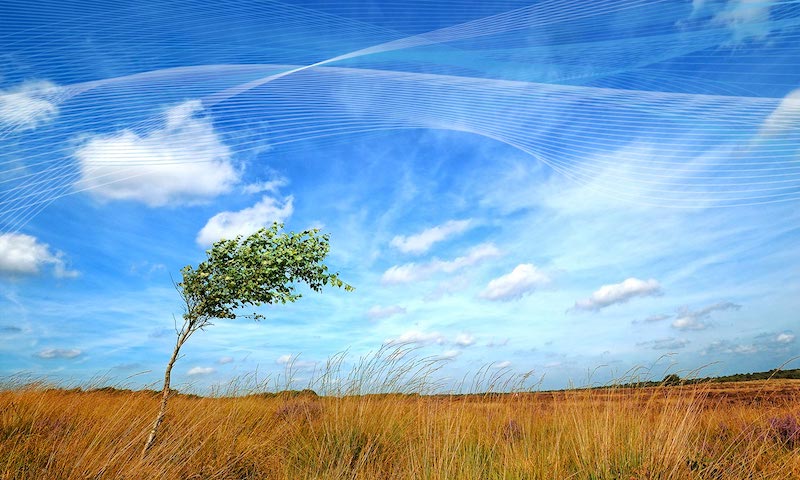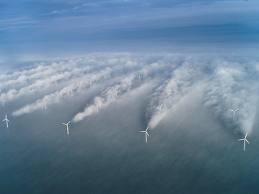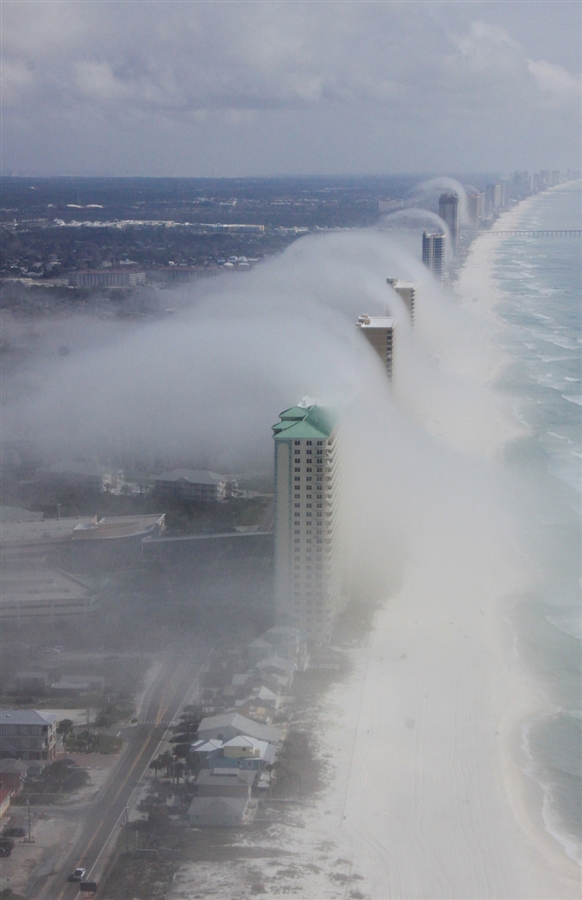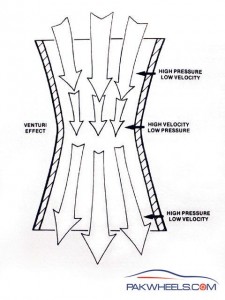
[youtube height=”315″ width=”560″]https://www.youtube.com/watch?v=JOWVAMZ69r8[/youtube]
How To Avoid Getting Your Kite Wrapped Around Lamp Posts
There are several effects which will cause changes in the wind speed and we need to be aware of them when flying a kite if we are to have a pleasant experience and stay safe. In this lesson we cover the 4 major effects which you need to know about before you go and hoist and kite. Please don’t just read this page once and forget about it, instead try to notice the effects as your out and about during the day…believe me, being able to spot the signs of any of these effects can mean the difference between a great day flying the kite and an awful one.
Gradient Wind
The wind speed drops the closer to the earth it is, this is because as the wind passes over the earth (or sea) it’s movement generates friction, causing the speed to drop. The more uneven the earth (or sea) surface the greater the effect of this friction and the higher the difference between the wind at ground level and the wind higher up in the atmosphere.
This effect is called Gradient wind.
The earth generally causes more friction than the sea which is why often on beaches with an onshore wind there is a line of ‘dodgy’ wind at the shore line where the wind speed changes as the wind hits the beach and slows down in speed due to the increased friction.
For us kiters this means that what we feel on our face will almost definitely not be the wind speed that our kite is feeling 25m up in the air. With the kite usually experiencing higher wind speed due to its raised altitude. This effect can have a lot more impact than you would think and indeed yacht sails are designed with this effect in mind so the top of the sail has a different shape to the bottom to prevent the fabric from tearing.
Wind Shadow

A wind shadow is created by an obstacle in the path of the wind, which is why we huddle behind walls to shelter from the wind sometimes. Objects in a wind shadow will feel much less wind speed than those not in the shadow. Wind passing an obstacle (such as a building) does not simply stop when it hits this obstacle but attempts to get around it any way it can. That is, it will go over, under or around it, this creates a patch behind the obstacle where the wind is very turbulent as it is coming from potentially several different directions at once and the wind speed is much less.
The best way to envisage this is to imagine rapids in a river, when the water hits a rock you get white water around and behind the rock as the water tumbles over the top and around of it in a struggle to carry on moving downstream. This is exactly what we would see if we could ‘see’ the wind. An obstacle will cast a shadow (disrupting the wind speed) up to 7 times its height down wind.

Updraft
An obstacle in the path of the wind will not only create a disruption downwind of it (a wind shadow) it will also create a disruption upwind of it. Think back to our example of the rapids, not only do you see white water behind the rock but also in front of it. This is caused by water that cannot get out of the way hitting the obstacle and being reflected back into the path of the oncoming river, causing disruption and forcing the water behind it upwards and over the top (as well as around the sides) of the reflected water, thus creating updraft.
This is an extremely important effect to know about and it is for this reason that we should not kitesurf too close to large cliffs or practice kite flying in-front of large obstacles. The upwind disruption will be felt at a distance in front of the obstacle up to 3 times its height.
This amazing photo illustrates both wind shadow and updraft very clearly.
The Venturi Effect
This is particularly pertinent to us here in Tarifa as this is the reason why it’s so bloomin windy here! The Venturi effect teaches us that when wind passes between two obstacles the wind speed will increase as it is forced through the gap in between them.
So here at Tarifa we have the straights of Gibraltar and on either side we have mountains, the Riff Mountains in Morocco and Gibraltar on the Spanish side, wind coming from any direction is forced through this gap and accelerated out the other end much like a wind tunnel, giving Tarifa its famously consistent Levante and Poniente winds.
